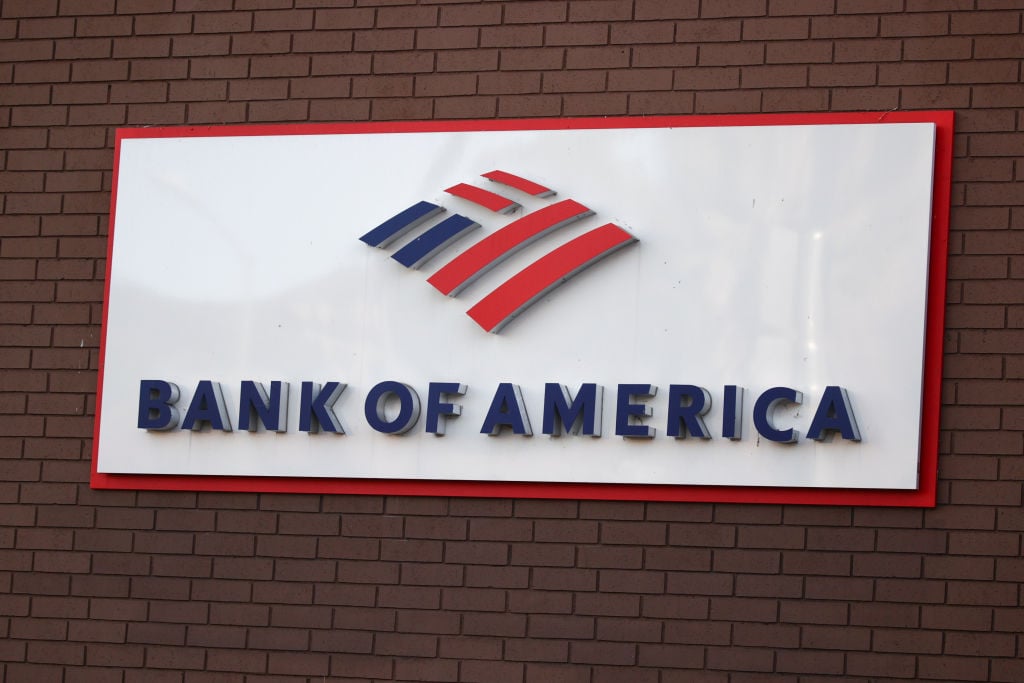Most investors would likely agree that Bank of America (NYSE: BAC) looks cheap right now. While it's the nation's second largest bank by assets and holds 12% of the country's deposits, it trades for less than half of book value. What gives?
The answer is that B of A faces three significant risks that have already eroded its profitability and will continue to do so in the future. Here's a quick look at each of them.
1. Credit risk
Thanks to its 2008 purchase of Countrywide Financial, B of A emerged from the financial crisis with one of the worst loan books in the industry. According to data from the FDIC, a full 7.6% of its loans are at least 30 days past due. This compares to an industry average of 3.9%, and is well above the other money center banks: Citigroup (NYSE: C) comes in at 5.9%, JPMorgan Chase (NYSE: JPM) at 4.9%, and Wells Fargo (NYSE: WFC) at 2.7%.
With this in mind, it's no surprise that B of A charges off a massive amount of toxic loans every quarter. For the three months ended June 30, for instance, it charged off a whopping $4.4 billion. This is roughly $3.5 billion more than its quarterly total before the crisis, and accounts for approximately $1.40 a share in foregone profits.
As I've discussed before, moreover, both public and private investors are forcing B of A to repurchase massive swaths of toxic mortgages that Countrywide sold prior to 2008. In the first half of this year, outstanding repurchase claims soared to $22.7 billion from $12.6 billion at the end of 2011.
2. Interest rate risk
At the end of last week, the Federal Reserve commenced a third round of quantitative easing. While the announcement sent markets soaring, it couldn't be worse news for B of A.
The purpose of quantitative easing is to drive down long-term interest rates -- notably, the same rates that banks rely on to make money. Since the beginning of 2011, yield on 10-Year Treasuries has gone from approximately 3.3% down to roughly 1.8% today. As a result of this, B of A's net interest income has plummeted by approximately $2.5 billion on a quarterly basis. For those of you counting, that's $10 billion in forgone, high-margin income every year.
Although there's a limit to how far the Fed can reduce long-term rates, any movement in this direction will continue to erode B of A's profitability.
3. Regulatory risk
Finally, over the last three years, a veritable laundry list of laws and regulations have been passed that impact B of A's top and bottom lines.
In 2010, new regulations changed how overdraft fees are assessed, reducing B of A's top line by $1 billion a year. In 2011, a new law limited how much banks charge for debit card interchange fees, costing B of A between $1.5 billion and $2 billion a year. And set to take effect soon is the Volcker Rule, which will ostensibly prohibit depositary institutions from proprietary trading, an activity that yields $2 billion a quarter for B of A.
Foolish bottom line
Taken together, these three risks have wiped over $20 billion in revenue off of B of A's annual income statement. Needless to say, this goes a long way toward explaining why the lending giant's shares trade for the paltry value they do today.
Can B of A regroup and find other ways to make this up? That's one of the questions addressed by our new in-depth report on the bank. In it, our in-house bank analyst, Anand Chokkavelu, not only articulates the risks facing the bank, but also explains why its stock could "double or triple within the next five years." To learn why this is so before it's too late, simply click here now.






